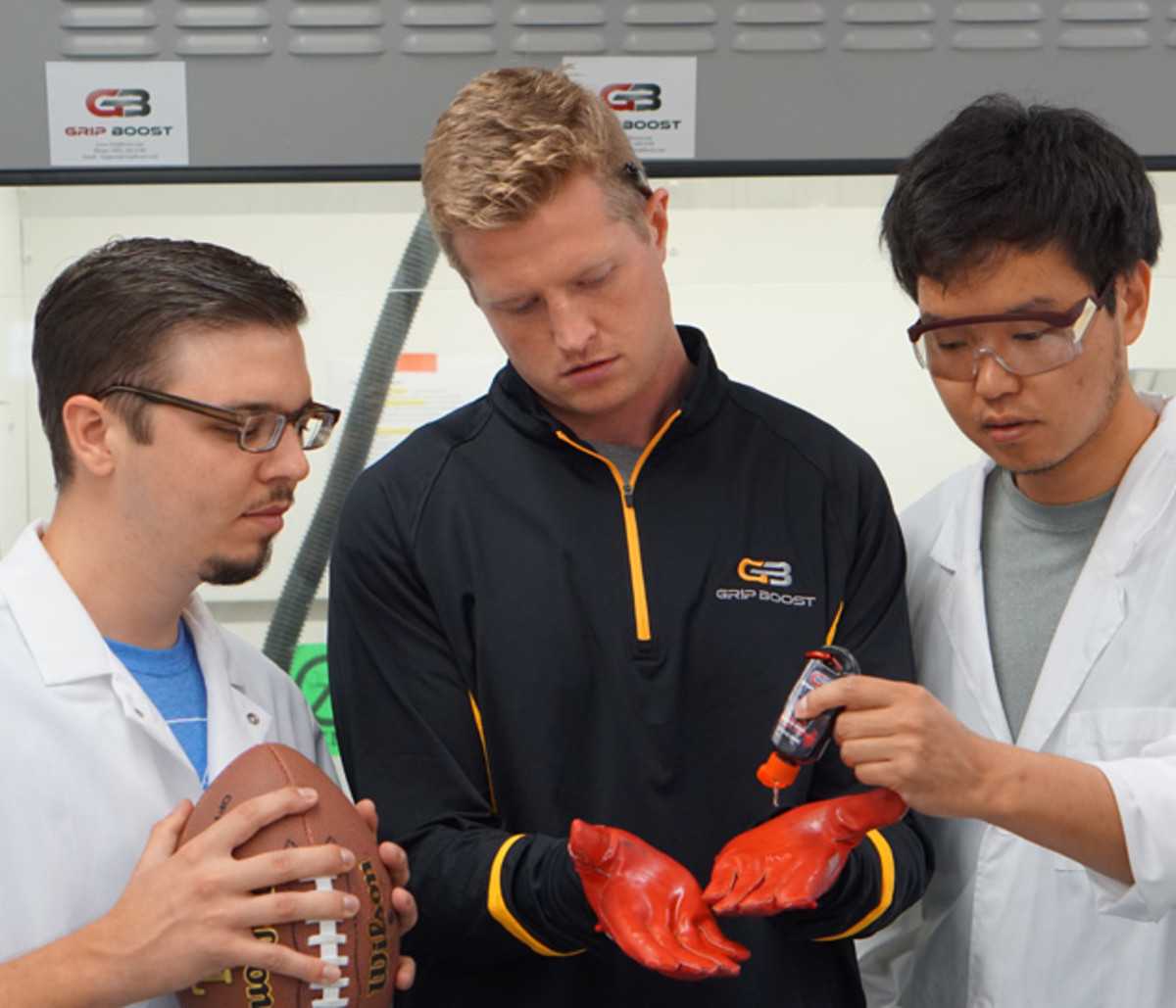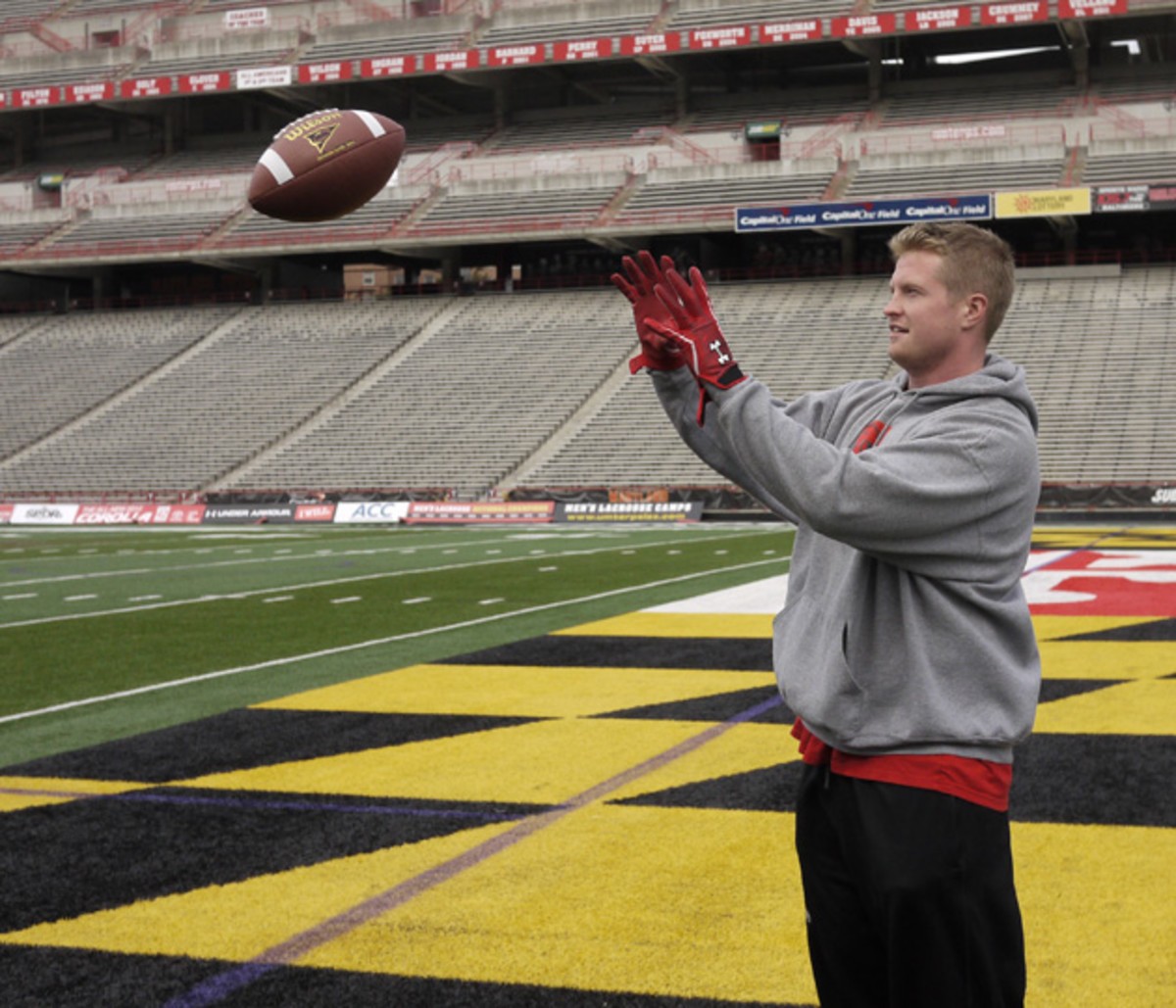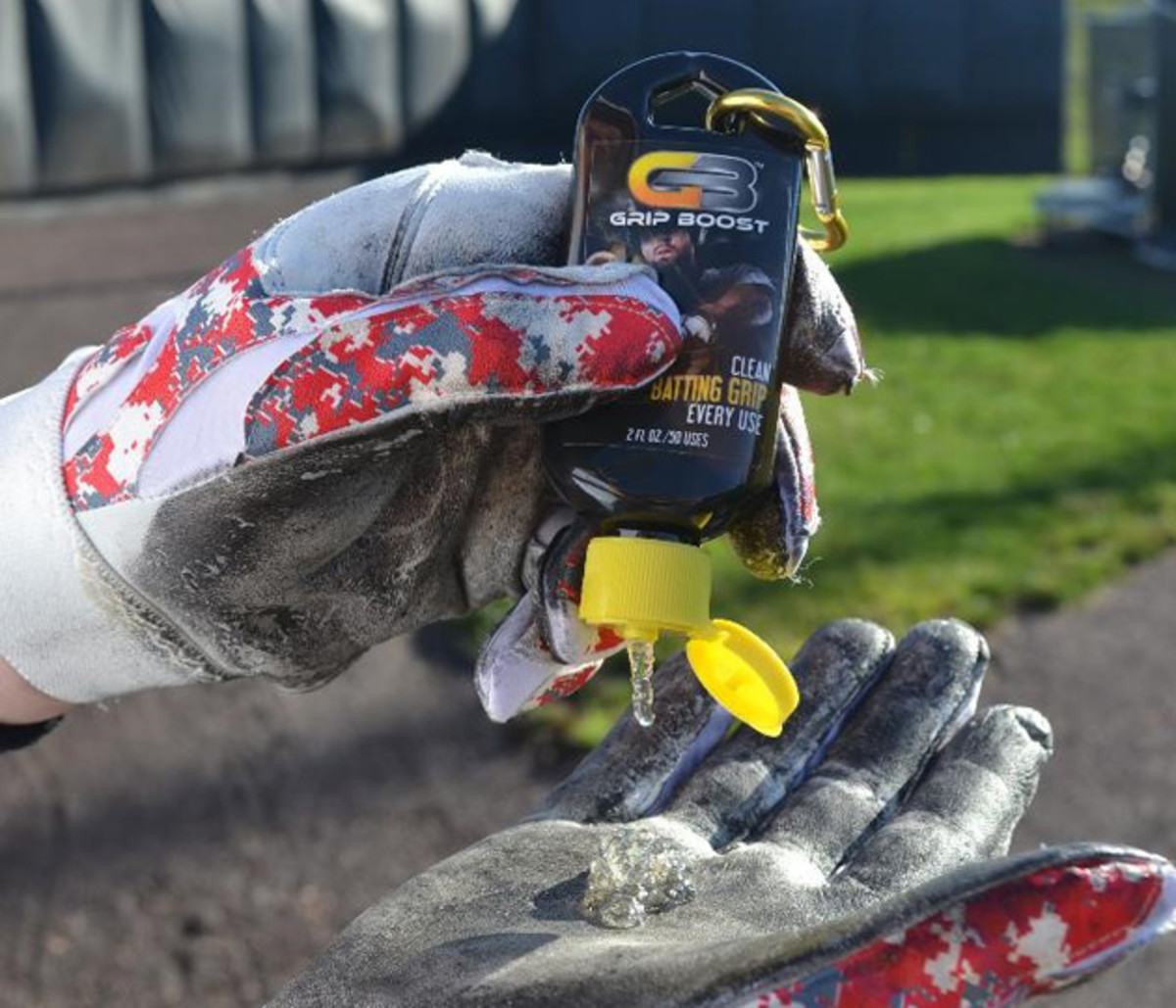Using crabs to catch footballs: Ex-NFL player develops Grip Boost for tacky gloves

Former University of Maryland and Baltimore Ravens tight end Matt Furstenburg knows all about catching footballs with popular tacky gloves. He also knows that the tackiness doesn't last, so he turned to the University of Maryland chemical and bimolecular engineering department for answers.
And being that we’re talking about Baltimore, then-students Chanda Arya, now with his doctorate, and Kevin Diehn, were already involved in research with a polymer derived from crab shells.
What my experience with creatine taught me about sports nutrition supplements
“It just so happened it would work naturally as this nice tacky polymer,” Arya says. “It was something we had been researching in our lab and a perfect starting point. It comes from nature, is super safe to use and is readily available.”
The crab-based research soon yielded what Furstenburg was looking for and the trio of Maryland grads formed Grip Boost, an after-market gel application that ensures tackiness on gloves, whether for football, baseball and soon golf.

Furstenburg says that he was going through multiple pairs of gloves every game. While NFL players get their gloves for free, the waste is still high. But for youth players, they may only have enough cash to secure one pair for an entire season and all the tricks in the book—from saliva to hairspray—simply won’t restore tackiness.
Helping out the high school players was the main focus of the effort. The Grip Boost solution started with crab shells and went through over 20 prototypes starting in 2012. During the process Furstenburg took iterations to the football field—and teammates—for testing.
“On the engineering side, we first tried developing the solution in the lab,” Arya says. “Each time Matt would take us to the football team. They would say the smell is kind of weird or they didn’t like the texture or color. The hardest part was going through so many iterations.”

Two years after starting the process, Furstenburg says, he had his final product, a gel that forms a thin polymer film on the glove that provides tackiness for about 15 to 25 catches. The gel takes about 15 seconds to dry, allowing players to apply multiple times per game. In 2014, Grip Boost was runner-up for the University of Maryland Invention of the Year.
Why hamstring injuries are so common in NFL players, during preseason training
And it’s fully legal. While products suck as Stickum are outlawed in many sports because it leaves a mess, the rules in football, for example, allow for products that don’t transfer residue.
“We had designed from day one to be legal,” Arya says. “The polymer that dries to the surface of the glove provides a tacky film. Think of new football gloves that have a polymer that doesn’t transfer. We restore the grip back to the original level. It doesn’t transfer.”

Grip Boost has proven popular at the high school football level and is in use by local Maryland university teams. It has also expanded beyond football, as the product has been slighted tweaked to work in baseball in an effort to replace the mess of pine tar. In baseball, where Johns Hopkins University and the University of Maryland, Baltimore County use the product, Grip Boost was made washable so that players could clear their gloves at any point.
The upcoming golf product, though, comes from a different angle, offering a spray nearly waterproof to combat the sweat from players.
Grip Boost has taken gloved sports to a new tactile level. And give some credit to the crab.
Tim Newcomb covers sports aesthetics—stadiums to sneakers—and training for Sports Illustrated. Follow him on Twitter at @tdnewcomb.
